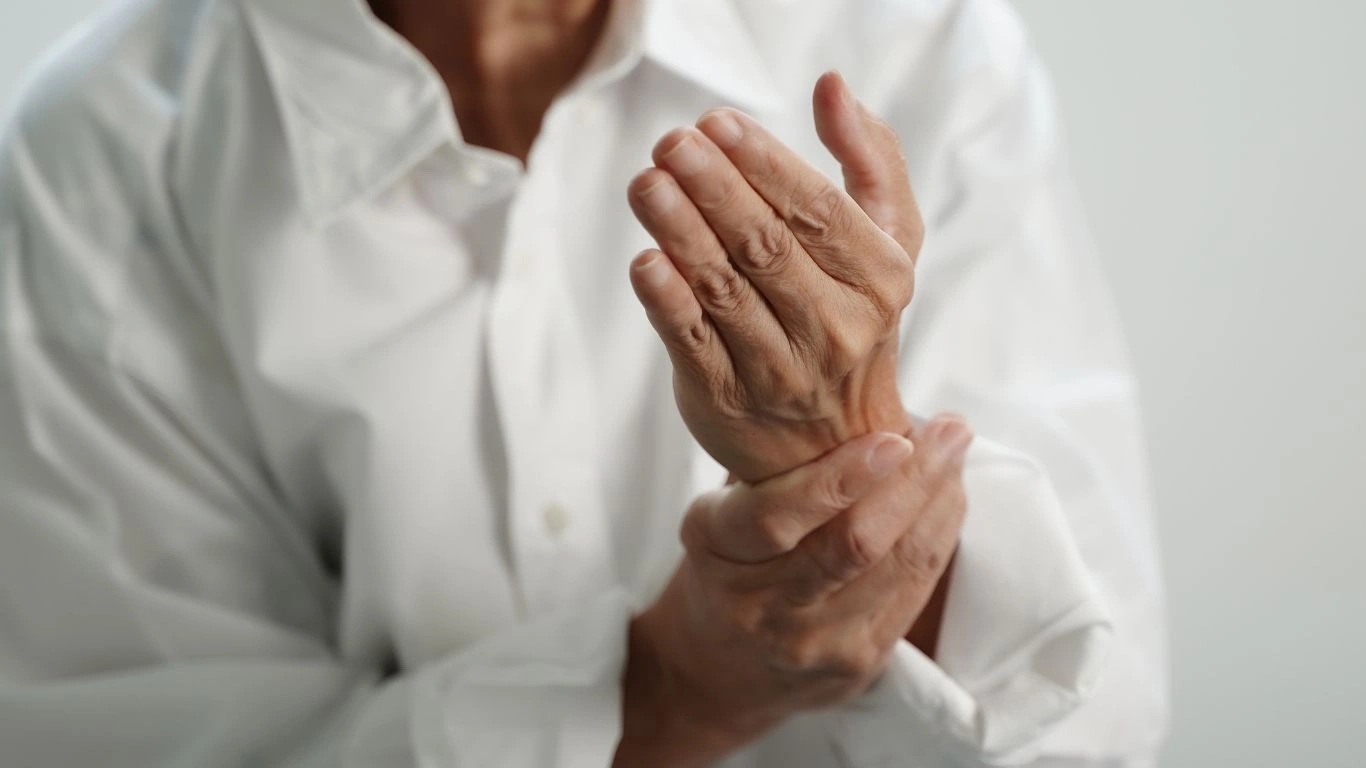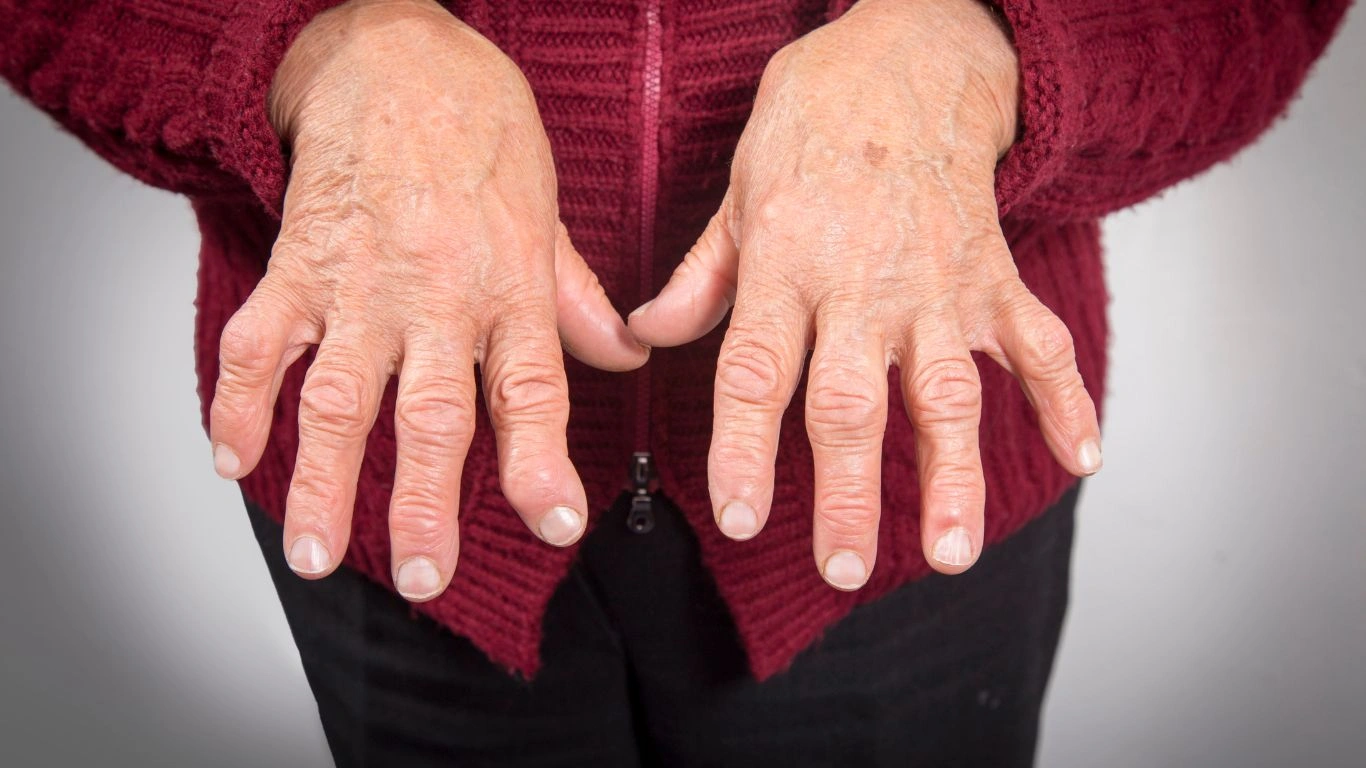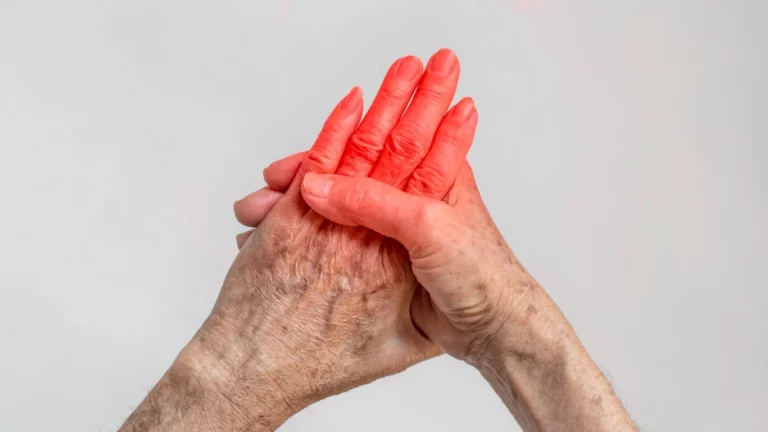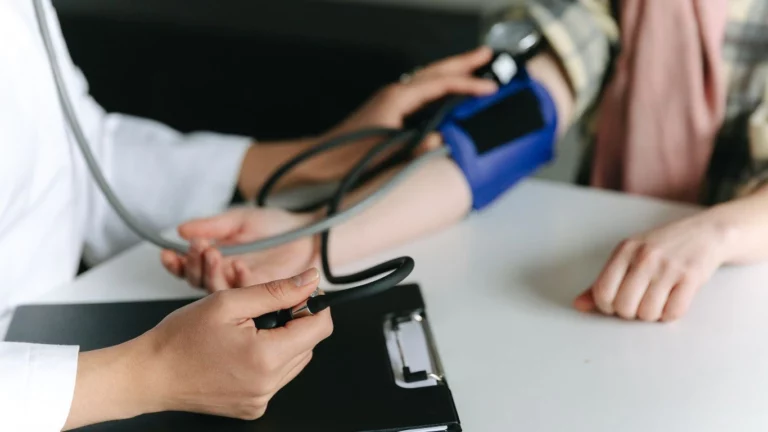Powerful Ways to Reverse Early RA Before It Worsens
If you’ve recently been diagnosed with early rheumatoid arthritis (RA), you’re probably feeling a mix of emotions—uncertainty, frustration, maybe even fear. I get it. As a rheumatology nurse practitioner, I’ve walked beside many patients during these early stages. One question I hear more often than you’d think is, “How to reverse early RA?” While there’s no magic pill, the good news is that early intervention can slow down, stop, and in some cases, even partially reverse the impact of RA. Let’s talk about what that actually looks like—because you deserve more than a list of meds and a pat on the back.
What Does “Early RA” Really Mean?

“Early” RA generally refers to symptoms that have been present for less than six months. That’s a small window, but it’s also a critical opportunity. This is when the inflammation that causes joint damage hasn’t had time to do too much harm yet. I often tell patients, “This is our best shot to change the trajectory.”
It’s also when things can feel the most confusing. Maybe your hands are stiff in the morning, or you’ve noticed joint pain that just won’t quit. Fatigue might be creeping into your daily routine, even after a good night’s sleep. These are the body’s red flags—and paying attention now can save you a world of hurt later on.
The Power of Catching RA Early

One of the most powerful lessons I’ve learned in my career is just how transformative early action can be. The phrase “reverse early RA” might sound bold, but in clinical practice, I’ve seen some patients reach remission or near-remission by combining lifestyle shifts with medication and physical therapy. It’s not a one-size-fits-all plan, but when you strike while the iron’s hot—so to speak—your chances are dramatically better.
Why Timing Matters
Think of early RA like a spark. If you act quickly, you can stamp it out. Wait too long, and it becomes a wildfire. Research consistently shows that initiating disease-modifying treatments in the first 3–6 months leads to better long-term joint health, less disability, and even lower healthcare costs down the line.
Symptoms That Should Never Be Ignored
RA doesn’t always shout—it whispers. These are the signs I urge patients to take seriously:
- Morning stiffness lasting longer than 30 minutes
- Swelling in more than one joint
- Fatigue that feels more like burnout than tiredness
- Warmth or redness in the joints
- Unexplained weight loss
If you’re nodding your head right now, don’t wait to get evaluated. The earlier the diagnosis, the better the chances of reversing the course.
Getting a Diagnosis Isn’t the End—It’s the Beginning

One of the biggest myths I hear? That a diagnosis equals a lifetime of pain. Nope. Getting the diagnosis means we can finally do something. It’s the start of a plan, a strategy, a game-changer. I’ve sat across from patients who, six months later, barely remember the pain they came in with. That’s not magic—it’s evidence-based, personalized care.
Start with a Multi-Modal Approach
No single treatment is going to “reverse” early RA on its own. Here’s what I recommend as the foundation:
- Start meds early – Usually DMARDs (Disease-Modifying Anti-Rheumatic Drugs) like methotrexate. The earlier they’re started, the better.
- Embrace movement – Gentle stretching, physical therapy, or low-impact exercise helps keep joints flexible.
- Anti-inflammatory diet – Omega-3s, leafy greens, turmeric… you’ve heard it before, but trust me, it makes a difference.
- Sleep like it’s your job – Your immune system does its best work when you’re rested.
- Stress management – Mind-body work isn’t fluff. Yoga, breathing exercises, or therapy can reduce inflammation triggers.
It’s not about doing everything at once. It’s about building the right combo that fits your life. I’ve had patients who felt 80% better within months just by cleaning up their diet and sticking with their meds.
How to Reverse Early RA with Targeted Lifestyle Tweaks

Let’s dive deeper into what you can actually *do* to push back against early RA. We’ve already talked about medication and movement, but the lifestyle angle is where you can really take the wheel. I’ve seen folks who were skeptical about lifestyle changes come back to my clinic three months later with less pain, more energy, and a renewed sense of control. That’s not anecdotal fluff—it’s what happens when you give your body what it’s been begging for.
Food as Medicine—Seriously
I used to think patients got tired of hearing about diet, but now I realize it’s all about how we talk about it. No, you don’t have to live off kale and chia seeds. But dialing in an anti-inflammatory diet can calm your immune system and support your meds in doing their job. Here’s what I suggest focusing on:
- Fatty fish – Salmon, sardines, and mackerel are packed with omega-3s.
- Colorful veggies – The brighter, the better. Think spinach, bell peppers, beets.
- Turmeric and ginger – These natural anti-inflammatories can be added to teas, soups, or smoothies.
- Limit processed foods – Especially those with added sugars and refined carbs. These can fuel inflammation like gasoline on a fire.
I usually tell my patients, “Don’t aim for perfect—aim for better than yesterday.” Start with breakfast. Can you swap your sugary cereal for oatmeal with blueberries and walnuts? Small wins add up fast.
Supplements—Helpful or Hype?
This is a hot topic, and understandably so. Here’s the deal: while supplements aren’t a replacement for your prescription meds, some of them can support your immune system and reduce flare-ups. But quality and timing matter. Always talk to your healthcare provider (preferably someone like me, who won’t just say “take fish oil” and send you out the door).
Some supplements I often recommend:
- Omega-3 fatty acids – For joint lubrication and inflammation reduction.
- Vitamin D – Especially if you live in a low-sunlight area or spend most days indoors.
- Turmeric (curcumin) – The active compound in turmeric, best absorbed with black pepper.
- Probiotics – To support gut health, which is tightly connected to immune function.
Managing Stress to Support Healing

This one always surprises people—stress can seriously amplify RA symptoms. I’ve had patients go through emotionally tough seasons and come in saying their joints were suddenly on fire again. It’s not in their heads. The stress-immune connection is well-documented, and learning how to downshift your nervous system is crucial.
Simple Stress Busters That Actually Work
You don’t need a yoga retreat in Bali to feel better. Start with these:
- Deep breathing exercises – Try box breathing: inhale for 4 seconds, hold for 4, exhale for 4, hold for 4.
- Journaling – Getting your thoughts on paper can help calm your mind and make sense of stress triggers.
- Walking in nature – Not for the steps, but for the peace. Trees, sunshine, and quiet do wonders.
- Talk therapy or support groups – A trained therapist or even a RA-specific support group can make you feel less alone in this.
My rule of thumb? If you feel tense in your shoulders, your joints probably feel it too. Check in with yourself. Your body keeps score.
How Sleep and Recovery Affect RA Reversal

If you’ve ever had a bad night of sleep and felt extra achy the next day—yep, that’s real. In early RA, quality sleep is more than rest—it’s repair. This is when your body does the immune system reset work. Reversing early RA is way harder if your sleep is trash.
Tips for RA-Friendly Sleep
I give these sleep hygiene tips to nearly every patient, because they work:
- Create a wind-down routine – Warm bath, herbal tea, and screen-free time before bed.
- Keep your room cool and dark – Aim for 65–67°F and blackout curtains if needed.
- Support your joints – Try a pillow under your knees or between your arms if you have shoulder discomfort.
- Stick to a consistent sleep schedule – Yes, even on weekends.
I’ve had patients come back and say, “All I did was fix my sleep, and my flares got better.” That’s not an exaggeration—it’s your immune system finally getting a break.
So no, reversing early RA isn’t about chasing unicorn cures or overhauling your life overnight. It’s about stacking small, sustainable wins that work with your body instead of against it. And honestly, that’s where the real transformation begins.
Tracking Progress When Reversing Early RA

Alright, now that we’ve covered treatment, lifestyle, stress, and sleep—it’s time to talk about how you actually track if what you’re doing is working. This part gets overlooked a lot, but I always stress this with my patients: if you don’t measure your wins, you might miss just how far you’ve come.
In clinic, we use a few objective tools—blood tests, joint counts, and inflammation markers like ESR and CRP—but that’s not the whole picture. You know your body better than any lab result.
Journaling Symptoms
Keep a simple log (doesn’t need to be fancy) of your:
- Pain levels (0–10 scale works great)
- Energy/fatigue
- Stiffness duration (especially morning stiffness)
- Flares—when they happen and how long they last
Over time, you’ll spot patterns. One of my patients once noticed her flares always followed poor sleep—just tracking that helped her prioritize rest and reduce flare frequency. Data = insight.
Lab Markers and Imaging
Don’t skip follow-up labs. I get it—those appointments can feel repetitive. But inflammation levels can dip before you physically feel better. Seeing your CRP improve? That’s your immune system saying, “Hey, we’re calming down.”
Building Your Personal RA Support System

Reversing early RA isn’t something you should go through alone. I’ve seen firsthand how powerful it is when patients feel heard, supported, and understood. So let’s talk about your support team.
Your Medical Team Matters
You want more than someone who just writes prescriptions. You want a rheumatologist and a care team that listens, educates, and adjusts plans based on your real life. I’ve had patients tell me, “You were the first person who actually believed my pain.” That breaks my heart—and fires me up to do better every time.
Ask questions. Take notes. And don’t be afraid to get second opinions if you feel dismissed. Your voice belongs at the table.
Lean on Community
Online forums, Facebook groups, even local arthritis meetups—these places can be gold mines of real-world tips and emotional support. Just be mindful of where you’re getting advice. Look for moderated, evidence-informed spaces that don’t push miracle cures.
Having someone who says, “Yep, I’ve been there,” is a game-changer. You’re not alone in this fight—even when it feels like it.
The Long Game: Sustainability Over Perfection
Here’s something I remind every single patient: This is not about being perfect. You’re going to have off days. You might fall off your diet, skip your stretches, forget your meds. That’s okay. It’s what you do next that counts.
Reversing early RA is a long game. It’s about consistency, not intensity. Progress over perfection. Trust me, I’ve seen people beat themselves up for “slipping,” only to get right back on track and make huge strides in just a few months.
Red Flags to Watch For
While you’re working your plan, keep an eye out for signs that might mean your RA is progressing, not improving:
- Sudden increase in joint swelling or stiffness
- Fatigue that worsens despite rest
- New joints becoming painful
- Persistent low-grade fever
If you notice any of these, don’t wait—get back in touch with your provider. Early course-correction can still get you back on track.
Final Thoughts from the Front Lines
I wish every newly diagnosed RA patient could sit in on just one clinic day with me. You’d see people turning corners, getting stronger, living better. And you’d also see that no two journeys look the same. Some people find their rhythm in weeks; others take a little longer. Both are valid.
What matters is that you start. Start small, start scared, just start. Early RA doesn’t have to define you. With the right support, a flexible plan, and a whole lot of self-compassion, you can absolutely turn the tide.
References
- American College of Rheumatology
- Arthritis Foundation
- National Institute of Arthritis and Musculoskeletal and Skin Diseases
Disclaimer
This article is intended for informational purposes only and does not substitute professional medical advice, diagnosis, or treatment. Always consult with your rheumatologist or healthcare provider before making any changes to your treatment or lifestyle plan.

Tarra Nugroho is a dedicated Nurse Practitioner with a strong foundation in family and preventive care. She brings both compassion and clinical expertise to her practice, focusing on patient-centered care and health education. As a contributor to Healthusias.com, Tarra translates medical knowledge into clear, empowering articles on topics like women’s health, chronic disease management, and lifestyle medicine. Her mission is simple: help people feel seen, heard, and informed—both in the clinic and through the content she creates. When she’s not caring for patients, Tarra enjoys weekend hikes, plant-based cooking, and curling up with a good health podcast.






